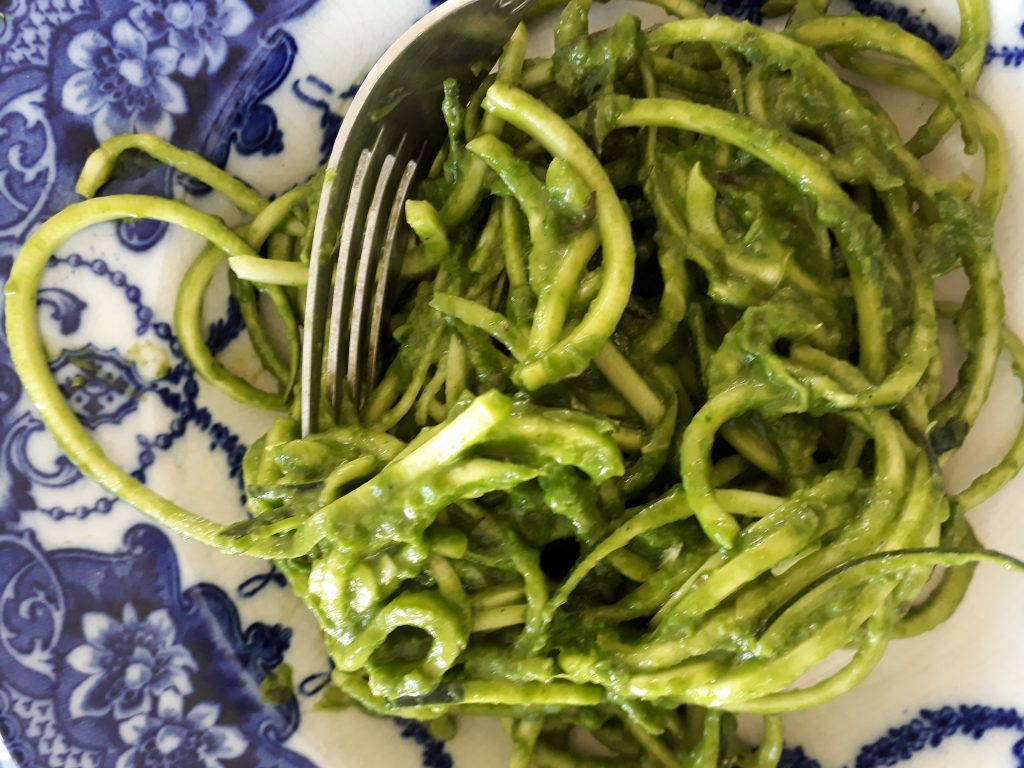I wish I could claim this idea as my own but every supermarket now sells spiralized courgettes for you to use instead of pasta. The oil and salt lift courgetti from being worthy to being delicious. I used to make a lot of wholemeal pasta dinners until I studied nutrition. Then I realised the large proportion of starchy foods in meals was contributing to my fatigue, frequent infections and poor stress tolerance. Rebalancing my plate helped me enormously within days.
For 2 people
2 medium courgettes
2 dsp extra virgin olive oil (more if you want!)
Pinch of Himalayan salt or sea salt
1. Make long strands of courgette: Either grate them lengthways (skin and all) on the big side of your grater or use a spiralizer.
2. Heat a frying pan on a medium heat. Add the olive oil, the courgetti and scatter over a generous pinch of salt.
3. Now heat, stirring every so often, for around 5 minutes. You want them heated, VERY slightly softened, but not so soft they release water and go into a bit of a mush. It took me a few tries to get this right!
4. Serve immediately with your pasta sauce. Enjoy!
 Why this is good for you:
Why this is good for you:
When we eat more than 1/4 of our lunch and dinner as high carb foods (e.g. pasta, potatoes, bread) it makes us more likely to struggle with poor detoxification (acne, PMS, headaches or fatigue anyone?). Your body stores excessive sugars as fat and this is why reducing carbohydrates to modest levels helps so quickly in getting you to your ideal weight. Farmers know that one of the fastest ways of fattening their livestock for market is to switch from grass-feeding to grain-feeding. Excessive sugars come not only from “healthy” grains, potatoes and fruit juice but also (even more) from added sugar foods like biscuits, cakes and “fruit juice drinks”.
About wheat pasta: Did you know that gluten breeches the lining of your small intestine within minutes of reaching it? This allows gut bacteria, waste and undigested food to flood into your bloodstream. It’s called increased intestinal permeability and lasts for a minimum of 3 hours. This has been proven by ground-breaking research using capsule video cameras swallowed by HEALTHY STUDY VOLUNTEERS. This is not related to gluten sensitivity or coeliac disease. It happens to everyone though its effects are more serious in those groups. So finding ways to lower gluten in our daily eating is a great way of moving towards better health. Looking after your gut lining makes you less likely to suffer sepsis should you become very ill with an infection. Low gluten grain choices include sourdough bread and oats. If you have an autoimmune condition like hypothyroidism (90% is autoimmune) you will need to switch to naturally (not highly processed!) gluten-free options.

